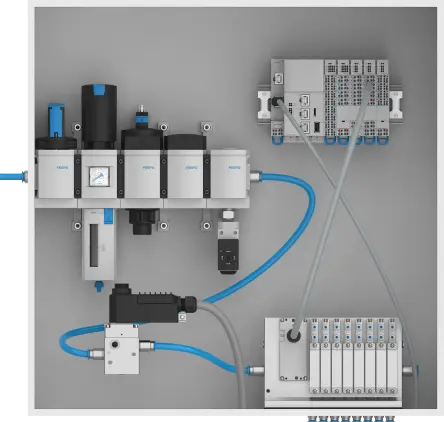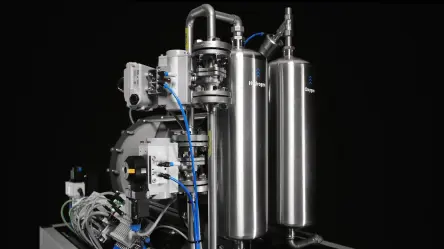Two paths to automation in hydrogen production
The automation of electrolyzers offers two approaches: centralized or decentralized architecture. Both pursue the goal of producing safe hydrogen in an efficient manner. The difference lies in the design and control of the system.

Centralized automation
Central automation is controlled via a central control cabinet. All sensors, actuators, and valves are connected via cable connections and are operated and controlled by a central controller. Overview and easy servicing – a space-saving solution where space is at a premium.

Decentralized automation
In a decentralized concept, intelligent automation components are located directly in the processes. The control of the system is thus distributed over several modules or units. These can be valve terminals or I/O modules in different systems, for example. This saves space in the control cabinet, reduces the amount of cabling required, and facilitates the modular expansion of your system.
Centralized, decentralized, or even both?
That depends entirely on the framework conditions. For a compact electrolyzer, a central solution is usually the best option. For larger systems with distributed modules, the decentralized variant is often the better choice. Of course, you can also combine both concepts. Why not benefit from the strengths of two architectures and implement your individual ideas?
Are decentralized systems too complex?
Many people think that decentralized automation is difficult to handle. However, modern systems can now be configured easily and intuitively. This makes commissioning easier and ensures that your system runs stably and without unnecessary interruptions.
Simply decide
Festo will help you to find the right control concept for your requirements. The focus is always on the best solution – regardless of the technology used. This means that the decision depends on your system and your requirements. One thing is certain: From components to control cabinets, Festo is your one-stop shop.
Already successfully in use today
Our customers successfully use centralized and decentralized automation solutions for the production of hydrogen. This not only counters cost pressure, but also increases the efficiency and safety of processes – a real contribution to decarbonization. Benefit from our experience.
Checklist: Which concept suits you?
☑ Is your system compact or spatially distributed?
☑ Will you need to scale it flexibly in the future?
☑ How much space is available for control technology?
☑ Would you like to reduce cabling and installation work?
☑ Is a combination of a centralized and decentralized solution an option?